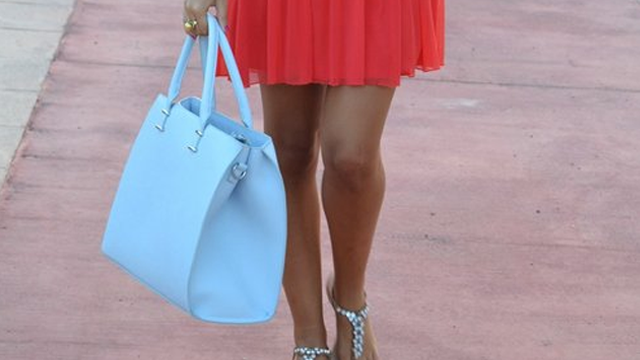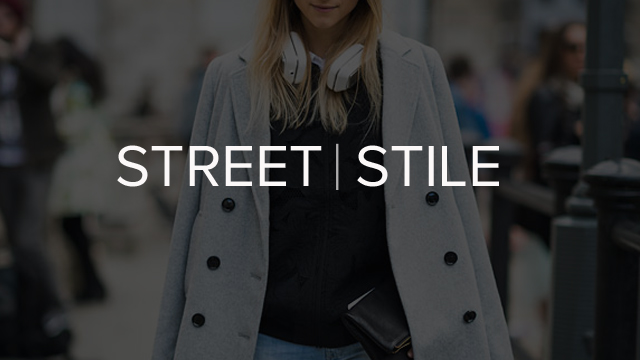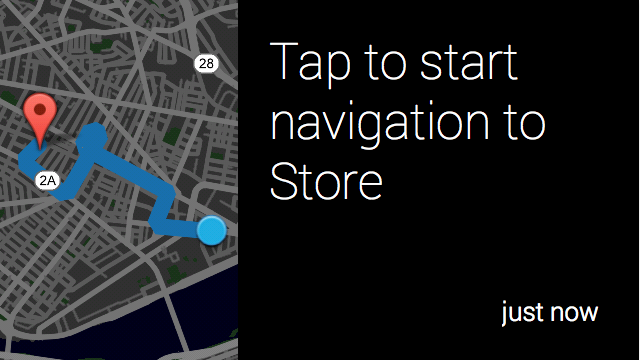
With an abnormally high population of Google Glass owners in one convention center and ShopStyle’s API open to participants at the TechCrunch Disrupt Hackathon, it should come as no surprise that a number of hacks combined the two.
Between the use of Glass at fashion weeks past and present and magazines’ inclusion of the technology in photoshoots, the precedent (often kitschy but not always) is there. Glass makes every bit of sense for fashion apps, as it has the potential to make the physical world shoppable online. So let’s go out on a limb here and say that these hacks are just the first of many.
I caught up with the groups after Disrupt to talk about their hacks, all of which treat the Glass shopping experience differently.
StyleZapper
Yosun Chang, a developer with experience in augmented reality, has been working on Android apps for Google Glass since she received her pair in July. StyleZapper, one of two hacks Chang worked on at Disrupt, uses a platform she created called GyroFire, which uses Glass’s gyroscope to point a crosshair as the user moves her head and “fires” with a tap of the sidepad.
“It’s easy to move your head up and down, so I hacked together a weird new way to browse for clothing or any other online shopping,” Chang said. “You have a wall that you might consider choosing from, and instead of looking down at the screen, you’re just moving your head a little bit to point the cursor at the item you want to shoot to buy or something. It’s kind of experimenting with what Glass can do.”
Using head motion to navigate on Google Glass is intuitive, she said, since the device aligns with a natural gesture. Of course, the possible uses of GyroFire are much broader than a shopping app, and Chang said she is thinking about developing a simple shooting game called Target Practice.
“I like to compare it to five to seven years ago. If people were to tell you that you’ll be getting all your messages on a 3×5-inch device, that would sound crazy,” she said. “There’s a form factor shift that might be happening, where Glass might be five to seven years from now the new form factor. When you’re wearing it on your head, it would be natural. Instead of scrolling through a website, people could be moving their head around, shooting things they like. A much cooler demo would be at a store. I could point Glass at a real item in the store and tap to buy. That’s pretty much possible right now.”

STREET | STILE
The STREET | STILE hack created by Marley Kaplan and Lance Nanek derives from the now-ubiquitous street style photography practice of stopping someone on the street to take a photo of their outfit. Glass wearers can take a picture, then speak to identify the clothing (“Alex Wang dress,” for instance), which would pull up similar shopping results. The app would also serve as a community where others can vote outfits up or down.
“I thought it would be a great way to enhance street style,” Kaplan said. “Rather than taking a picture and writing down what the products are, why not use technology to close the loop on the product to purchase and include sharing to let people vote on if they’re interested in that style or not?”
So while the ritual of approaching someone to snap their outfit is the same, the disruptive element is what happens after that photo is taken. This is in contrast to a hack like Glashion (up next), which allows the user to take a photo unbeknownst to the subject.
“Around Google Glass, there’s controversy about invasive tech… The use of it in this sense is for a fashion blogger or media outlet, who does [already] go ask, ‘Can I talk to you?’ It allows you to use Google Glass to find the product, or a similar product. I see it as using technology to enhance this fashion content rather than to be an invasion of privacy,” Kaplan said.
Kaplan is right that street style photography is a compelling content feature, so a Glass community gathering around a crowdsourced app of that nature is entirely feasible. Kaplan said that she and Nanek were not planning to build out the app, although (as with anything) they would consider it with enough interest.
Glashion
As makers Billy Mauro and Felipe Servin said, Glashion is for girls who want to know what other women are wearing but feel uncomfortable asking. Or for non-awkwards who just don’t have time to do so. This app lets users take a stealth photo of an item of clothing, and a Glashion stylist will recommend product matches, which they can scroll through and tap to buy or receive directions to the closest store that has it in stock.
The idea, the team told TechCrunch just after their Hackathon presentation, is to meld online and offline shopping behaviors. Relative to the other hacks that took on fashion and Glass, it’s maybe the purest application of using the device to shop: point, shoot, buy.
It’s also an idea that they’re hoping to take to market, Maura and Servin said.
“We’re building it out. We are meeting with the CEO of PopSugar and are going to talk to him about it. We have an invite to Google. We would hope to get Google Ventures to fund us.”
ShopStyle For Glass
This hack has a little bit of everything. Like the other products, users take a photo of an item, which ShopStyle For Glass then matches to similar products, which it can then find in nearby stores and provide directions to them. Longer term, the app uses pattern recognition based on user behavior to profile a person’s likes, which are funneled into a daily feed.

The products also change based on how the user shares them, and makers Alex Santamaria and Alfred Juarez said they are looking to encourage sharing by making the process as frictionless as possible. They’re already one step ahead because the user doesn’t have to pull out their phone to do so.
There’s also the possibility to reduce friction even further by using Glass’s eye track to gauge how much they like an item based on eye dilation, which takes place when a person is interested in something. It’s either awesome or terrifying. Take your pick.